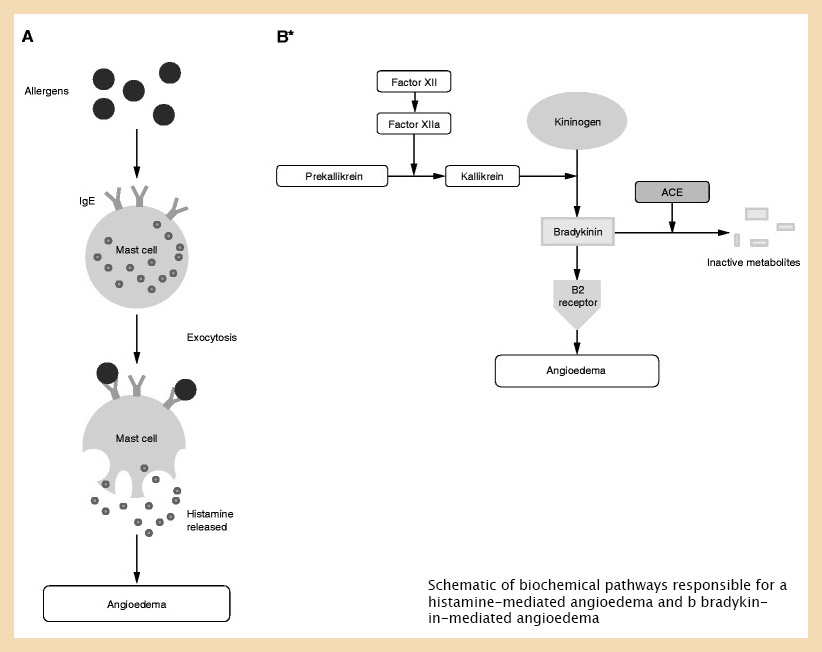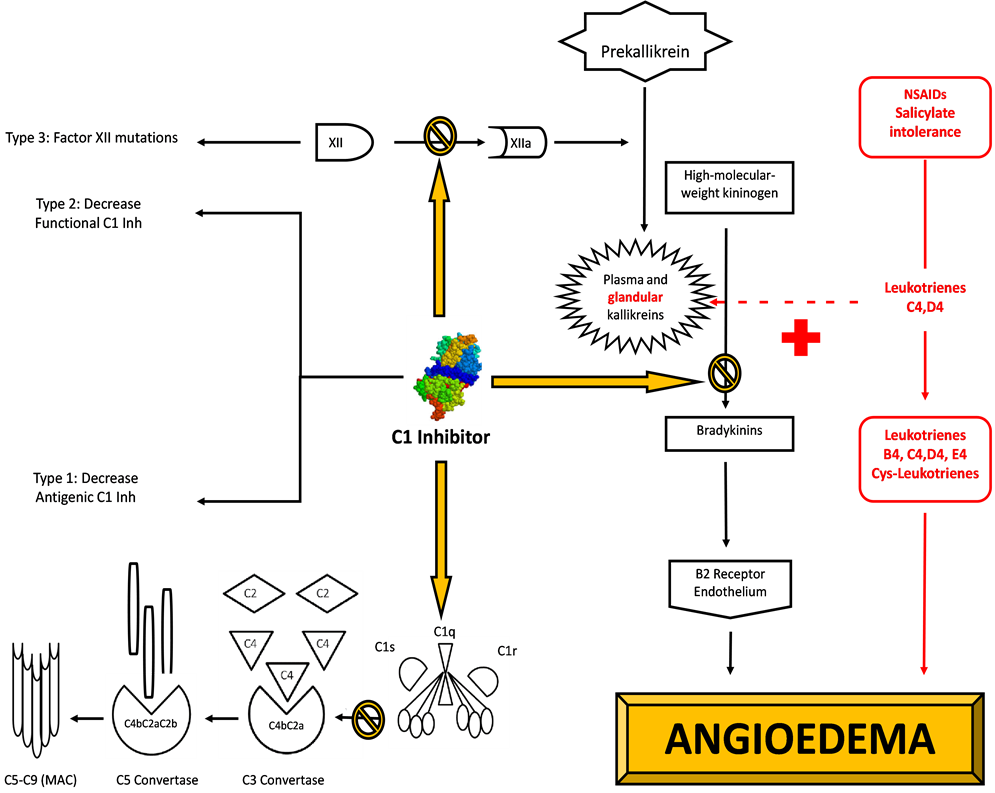Angioedema, often abbreviated as AE, is a medical condition characterized by the sudden swelling of deeper layers of the skin. This condition can occur in various parts of the body, including the face, throat, hands, and feet. While it may resemble hives on the surface, angioedema affects deeper tissues and can sometimes pose serious health risks if not addressed promptly. Understanding its causes, recognizing its symptoms, and knowing the available treatments are crucial for managing this condition effectively.


What Is Angioedema?
Angioedema is a form of swelling that occurs beneath the skin. It typically arises when fluid accumulates in the deeper layers of the skin, leading to puffiness and discomfort. Unlike hives, which affect the upper layers of the skin, angioedema targets the subcutaneous or submucosal tissues. This condition can be acute, lasting only a few hours or days, or chronic, persisting for weeks or even months.
The swelling associated with angioedema can appear suddenly and may be triggered by a variety of factors. In some cases, it resolves on its own without treatment, but in others, it requires immediate medical attention, especially if it affects the airways and compromises breathing.
Common Causes of Angioedema
There are several potential causes of angioedema, ranging from allergic reactions to genetic factors. Below are some of the most common triggers:
Allergic Reactions
- Food Allergies: Certain foods, such as nuts, shellfish, eggs, and milk, can trigger an allergic reaction that leads to angioedema.
- Medications: Some medications, particularly antibiotics like penicillin and nonsteroidal anti-inflammatory drugs, can cause allergic reactions that result in swelling.
- Insect Stings: Bee stings or bites from other insects can provoke an allergic response, leading to angioedema.
Hereditary Factors
Hereditary angioedema is a rare genetic condition caused by a deficiency or malfunction of a protein called C1 inhibitor. This type of angioedema is passed down through families and can cause recurring episodes of swelling without any clear external trigger.
Acquired Conditions
Acquired angioedema is not inherited but develops later in life due to underlying health conditions. For example, certain cancers, autoimmune disorders, or infections can lead to the development of angioedema. Additionally, some people develop this condition as a side effect of medications that suppress the immune system.
Idiopathic Angioedema
In some cases, the exact cause of angioedema cannot be determined. This is referred to as idiopathic angioedema. While the triggers remain unknown, the symptoms are similar to those of other types of angioedema.
Symptoms of Angioedema
The symptoms of angioedema can vary depending on the severity and location of the swelling. Common signs include:
- Sudden swelling of the skin, often around the eyes, lips, tongue, hands, or feet.
- A feeling of tightness or fullness in the affected area.
- Mild pain or discomfort, though the swelling itself is usually not itchy.
- Difficulty breathing or swallowing if the swelling occurs in the throat or mouth.
- Hives or redness on the surface of the skin in some cases.
It is important to note that while many cases of angioedema are mild and resolve on their own, severe cases can be life-threatening. Swelling in the throat or airways can obstruct breathing and requires immediate medical intervention.
Diagnosing Angioedema
Diagnosing angioedema involves a thorough evaluation by a healthcare professional. The process typically includes:
Medical History
Your doctor will ask about your symptoms, including when they started, how long they lasted, and whether you have experienced similar episodes in the past. They may also inquire about your family history to determine if hereditary angioedema could be a factor.
Physical Examination
A physical examination helps identify the areas of swelling and assess their severity. Your doctor may also check for signs of hives or other related conditions.
Laboratory Tests
In some cases, blood tests or other diagnostic tools may be used to confirm the diagnosis. For example, testing for levels of C1 inhibitor protein can help diagnose hereditary angioedema. Allergy tests may also be conducted to identify potential triggers.
Treatment Options for Angioedema
The treatment for angioedema depends on its underlying cause and severity. Below are some common approaches to managing this condition:
Antihistamines
For angioedema caused by allergic reactions, antihistamines are often the first line of treatment. These medications work by blocking the effects of histamine, a chemical released during an allergic reaction that contributes to swelling and other symptoms.
Corticosteroids
In more severe cases, corticosteroids may be prescribed to reduce inflammation quickly. These medications are typically used for short-term relief and are not recommended for long-term use due to potential side effects.
Epinephrine
If angioedema leads to difficulty breathing or swallowing, epinephrine may be administered as an emergency treatment. This medication helps constrict blood vessels and open up the airways, providing rapid relief.
Treatment for Hereditary Angioedema
Hereditary angioedema requires specialized treatment. Medications that replace or mimic the function of the missing or malfunctioning C1 inhibitor protein are often used to prevent or manage attacks. Additionally, therapies that block specific enzymes involved in the swelling process may be prescribed.
Avoiding Triggers
For individuals with known triggers, avoiding these substances or situations is key to preventing future episodes. This may involve dietary changes, switching medications, or taking precautions against insect stings.
Lifestyle and Home Remedies
In addition to medical treatments, certain lifestyle adjustments and home remedies can help manage angioedema:
- Cold Compresses: Applying a cold compress to the swollen area can help reduce inflammation and provide relief.
- Stress Management: Stress can sometimes exacerbate angioedema, so practicing relaxation techniques like meditation or yoga may be beneficial.
- Dietary Modifications: Keeping a food diary can help identify potential food triggers, allowing you to avoid them in the future.
When to Seek Medical Attention
While many cases of angioedema are mild and resolve on their own, certain symptoms warrant immediate medical attention. These include:
- Swelling in the throat or mouth that makes it difficult to breathe or swallow.
- Rapid onset of symptoms accompanied by dizziness or fainting.
- Severe abdominal pain, which can indicate internal swelling.
If you experience any of these symptoms, it is essential to seek emergency care immediately.
Preventing Recurrent Episodes
For individuals with chronic or recurrent angioedema, prevention is key to minimizing the impact of the condition. Strategies for prevention may include:
- Regular follow-up appointments with a healthcare provider to monitor the condition.
- Adhering to prescribed medications and treatment plans.
- Educating family members and caregivers about the condition and how to respond in case of an emergency.
By understanding the causes, recognizing the symptoms, and following appropriate treatment protocols, individuals with angioedema can effectively manage their condition and improve their quality of life.





